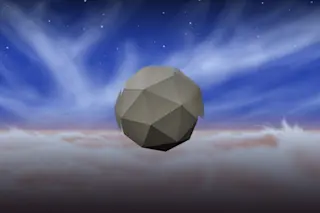An artist's rendering of a theoretical windbot. The potential new class of robots could someday explore gas giants like Jupiter and Saturn. (Credit: NASA) Cosmic landers are the go-to technology to get an intimate, on-the-ground look at foreign worlds. But is it possible to similarly explore gassy planets with nowhere to land, such as Jupiter and Saturn? Engineers at NASA believe the answer to that question is yes, but it’ll likely require an entirely new class of spacecraft to get the job done. That’s why the space agency has begun studying the feasibility of creating windbots: theoretical robotic probes designed to float in a planet’s atmosphere without the need for wings or balloons.
Our most intimate encounter with a gas giant came in 1995 when the Galileo spacecraft dropped a parachute probe into Jupiter’s stormy atmosphere. The probe lasted about an hour before it was destroyed by the heat and ...














